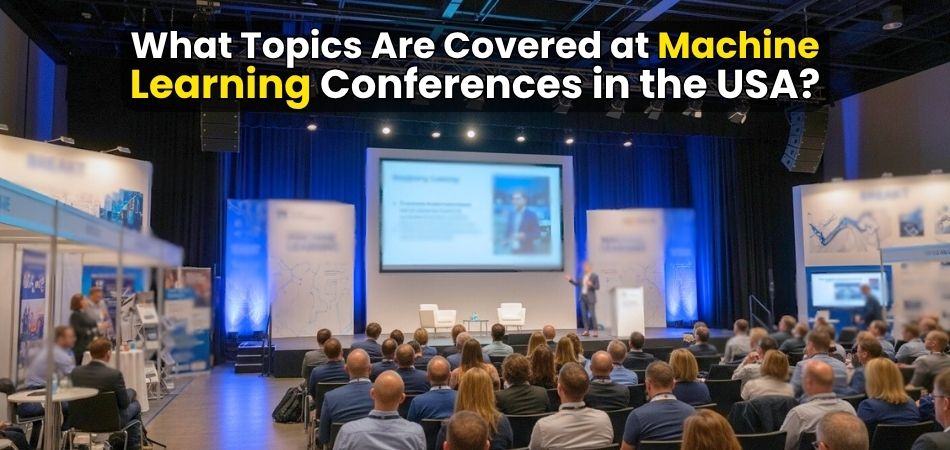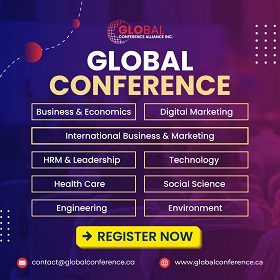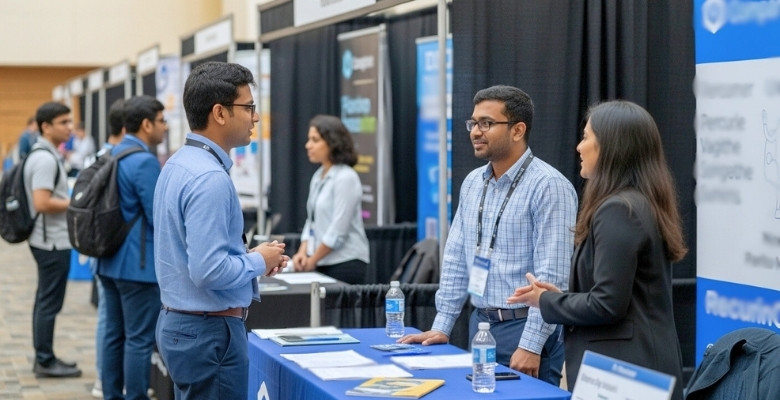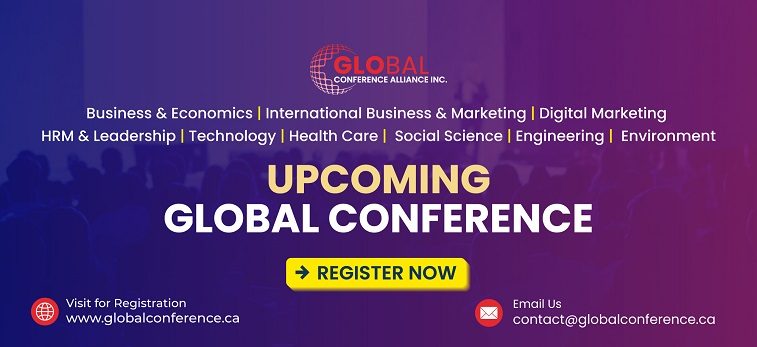Machine learning conferences are some of the most exciting and talked-about tech events in the USA. People from around the world join to share ideas, show off smart tools, and learn from each other. If you’ve ever wondered what topics are covered at machine learning conferences in the USA, you’re not alone.
Machine learning conferences in the USA cover topics like real-world applications, robots, speech tools, image tech, health, safety, and smart games. Experts also share new tools, software demos, and systems that learn without help.
Are you curious to learn more about these interesting topics and how they shape the future of smart technology? Keep reading this article, because it shares everything you need to know about the topics, ideas, and tools discussed at these exciting events.
What Topics Are Covered at Machine Learning Conferences in the USA?
There are many cool things happening in the world of machine learning. People meet at events to share smart ideas and useful inventions. These events help make machines do tasks faster and smarter. Keep reading to see what’s usually discussed at these exciting events.

Real-World Applications
Many speakers share how machine learning helps in everyday life. It’s used to help doctors treat patients, farmers grow crops, and shops suggest products. These smart tools learn from past data to improve future results. When you’re attending conferences in USA, you often hear how these tools solve common problems. Real stories and demos make the talks easy to understand and fun.
Robots and Automation
You’ll often see how robots are learning to do many smart tasks. Experts show robots working in homes, factories, or even in hospitals. These machines use learning systems to move, talk, or clean better each day. People love seeing real robots doing work that used to need people. They also explain how safety is built into these smart machines from the start.
Speech and Language
Talks about how machines understand voice and words are super interesting. Experts explain how phones or speakers turn your voice into useful actions. They also share how smart tools can talk back in clear voices. These tools get better by listening to lots of speaking examples. Some even learn different languages, so they can help more people worldwide.
Image and Video Tech
You might enjoy learning how machines use pictures and videos to “see.” Experts show how cameras can find faces, signs, or even animals. These smart tools help in cars, phones, and safety systems. They learn by studying thousands of pictures until they spot patterns. Many speakers show real demos to make these cool ideas easy to understand.
Cool Games and AI
Some of the most fun sessions talk about games using smart systems. Game makers explain how characters can learn from your moves and actions. The game changes based on what you do, so it stays exciting. It’s almost like playing with someone new each time you try. People enjoy these talks because they mix fun with learning and surprises.
New Tools and Software
There are always talks showing new tools that help build smart apps. These tools don’t need deep coding and are easy for beginners to try. People love learning how to create useful or fun things on their own. Simple steps and fun projects make these talks great for anyone curious. Speakers often give examples of how to get started right away.
Health and Safety
Machine learning is also helping to keep people healthy and safe. Experts share systems that warn doctors about possible health problems early. Some tools help hospitals decide the best treatment for patients. Others focus on safety in cars, planes, and other machines. These talks often include real success stories from hospitals and labs.
Weather and Environment
It’s cool to see how machine learning helps with nature and weather. Some experts show how smart systems give early warnings for big storms. Others talk about saving forests, oceans, and animals with smart tools. These systems study lots of data to make better predictions. Nature talks often show how smart tools protect the planet in small steps.
Learning Without Help
Experts often talk about machines that learn by themselves using data. These systems try things again and again until they get better. No one tells them what to do—they figure it out on their own. They learn patterns and improve by solving small puzzles step-by-step. It’s exciting to see how machines grow smarter without needing full instructions.
Machine learning is helping people in many different ways today. These events show how smart tools make life easier and faster. There is always something fun to learn from these amazing talks. Watching how machines learn is exciting, useful, and really fun to see.
How Research Gets Selected for the USA Machine Learning Conferences?
Big machine learning conferences in the USA are a big deal. But ever wondered how the research shown there actually gets picked? There’s a whole process behind the scenes that helps choose the best work. Let’s break it down for you.
Paper Review Process
Before a research paper gets accepted, it goes through a step called peer review. In this step, other experts carefully read and judge the paper. They check if the work is original, makes sense, and adds something useful. The reviewers don’t know who wrote the paper, and the writer doesn’t know the reviewers either. This makes the process fair and keeps the focus on the work itself.
Chances of Selection
Only a few papers get selected out of the many that are sent in. At famous conferences like NeurIPS or ICML, the chance of getting accepted is low, usually just 20 to 25 out of every 100 papers. That means only the best work gets in. This shows how competitive these events are and why researchers put in so much effort.
Popular Research Topics
Papers that get accepted usually bring something new to the table. They may introduce a new method or improve an old one in a smart way. The research should solve real problems or make machine learning easier or better. Reviewers also look for clear results that others can test as well. Good research is simple, smart, and useful.
Decision Makers
After reviewers give their feedback, a special group steps in to decide. These are the area chairs and senior chairs. They read the reviews, check the paper again, and decide which ones should be in the conference. If reviewers don’t agree on a paper, these chairs talk it over and come to a final decision. It’s a team effort.
Submission Timelines
All research papers must be sent in before a fixed deadline. If the deadline is missed, the paper won’t be accepted, no matter how good it is. After submission, there’s a long wait because reviewing takes time. It often takes a few months before researchers find out if their work was accepted or not.
So that’s how research papers get chosen for top machine learning conferences in the USA. It’s a long and careful process that focuses on quality and fairness. Only the best and most useful work gets selected in the end. If you’re curious about what happens at these conferences, there’s still more to learn!
Common Paper Categories at ML Conferences in the USA
Every year, machine learning conferences receive thousands of research papers. These papers cover many topics and ideas, and they are grouped into specific categories to stay organized. Let’s look at the most common ones you’ll find there.
Supervised Learning
This category deals with training machines using labeled data. That means the machine already knows what the correct answers are, and it learns by comparing its guesses to those answers. People use it for tasks like predicting prices or recognizing objects in photos. It’s one of the most used methods in the field and gets a lot of attention at conferences for its wide range of uses and strong results.
Unsupervised Learning
Some research explores how machines can learn without any labeled data. Here, the machine looks for patterns, groups, or structures on its own. It’s often used for sorting things into clusters or finding hidden patterns. This kind of work is tricky but powerful. If you plan to submit a research paper to a machine learning conference, knowing whether your topic fits under unsupervised learning can help you choose the right track.
Reinforcement Learning
Instead of giving answers or patterns, this method teaches machines by using rewards. The machine tries different actions and learns from what works and what doesn’t. It’s often used in games, robots, and simulations. Researchers love this area because it shows how a machine can slowly improve and even beat human players in games. Conference papers in this field usually include cool demos and clever learning tricks.
Fairness and Ethics
Not all research is about performance—some focus on making machine learning fair. These papers ask questions like: Is the model treating everyone equally? Is it making biased decisions? Work in this area checks how algorithms affect people and aims to make them better and safer. It’s a fast-growing category, and many conferences now have full sessions just for fairness and related topics like safety and responsibility.
NLP and Vision
Two of the most popular paper categories are natural language processing (NLP) and computer vision. NLP papers focus on helping machines understand and generate language, like chatbots or translation tools. Vision papers focus on images and videos, teaching machines to detect, label, or even create pictures. These two fields get the most submissions, and the competition in these areas is always high because of the rapid progress and strong real-world results.
Understanding the common paper categories makes it easier to follow what’s happening at big ML conferences. Whether it’s language, images, fairness, or learning styles, each category plays a key role. Keep reading to explore them deeper.
How to Prepare for a Machine Learning Conference in the USA?
Machine learning conferences are full of smart ideas, exciting talks, and new discoveries. You’ll meet people who are building amazing things with technology. But if you go without a plan, it’s easy to miss out on the best parts. A few simple tips can help you get the most out of the event, so let’s dive in.
- Look at the list of talks and workshops before the event so you can plan which ones you really want to attend.
- Read the short summaries, called abstracts, of the talks to get an idea of what each one is about.
- Make a small list of questions you might want to ask the speakers after their presentations or during breaks.
- Carry a notebook or use your phone to write down interesting ideas, names, or tools you hear during the sessions.
- Don’t try to attend everything—pick a few good talks instead of rushing around to see every single one.
- If you meet someone interesting, having a simple business card can help them remember you later on.
- Arrive at workshops or popular sessions a little early, as the good seats often fill up quickly.
- Talk to people during breaks or lunch—it’s a good way to learn new things and make useful connections.
- Bring a bottle of water and some snacks in your bag so you don’t have to leave during a long session.
- After the conference, go over your notes and look up anything you didn’t understand to keep learning more.
Planning ahead can help you enjoy the conference without feeling overwhelmed. It also makes it easier to learn and meet new people. You don’t need to do everything—just the things that matter to you. A little preparation goes a long way.
Networking and Career Opportunities at ML Conferences in the USA
Big machine learning conferences aren’t just about learning new things. They’re also full of people—experts, companies, and future teammates. The right moment or chat can open exciting doors. Stick around to see how these events can help your future.
Job Fair Areas
Most large ML conferences have special job fair sections where companies set up booths. You can walk around, ask questions, and learn what different companies are working on. Some even hold quick interviews on the spot. You don’t always need to apply in advance—just showing interest and having a friendly chat can leave a good impression. Big tech firms and small startups are usually present.
Poster Sessions
Many researchers share their work on large posters in open halls. These poster sessions are a great place to ask questions, give ideas, and talk one-on-one with the authors. You can walk right up and join a conversation. These spots are less formal and perfect for meeting people. If a topic interests you, don’t hesitate to speak up—it can lead to useful chats and even future collaborations.
Industry Meetups
Some companies host casual meetups during the conference, often in the evening or during breaks. These gatherings are usually open to everyone and are more relaxed than the main sessions. Snacks, small games, or demos are often included. This is a nice way to connect with people working on real projects in the field. You might even run into someone who shares your interest or works at a place you admire.
Research Talks
When experts speak on stage about their work, it’s more than just a lesson—it’s also a chance to connect. After the talk, there’s usually time for questions or quick chats. If you find their topic exciting, go say hello. Many attendees of machine learning conferences in the USA use these events not only to expand their knowledge but also to build relationships that lead to job offers, collaborations, or mentorship opportunities.
Friendly Conversations
Not every opportunity comes from a booth or a talk. Sometimes it’s the casual chats during lunch or while waiting in line that matter most. People are usually open to saying hi and sharing a few thoughts. Even a small conversation can lead to something bigger. Just being open, kind, and curious can help you meet people who remember you long after the event ends.
Machine learning conferences are full of chances to grow your career. Each handshake or hello could turn into something great. Whether it’s a job, a project, or a new friend, it all starts with a simple chat. Stay open and enjoy the moment.
How Do the Machine Learning Conferences in USA Shape the Future of AI?
Machine learning conferences in the USA are full of fresh ideas, smart minds, and bold experiments. These events gather people from all parts of tech and research. What’s shared there often sparks change in many places. Let’s take a closer look at how it happens.
Academic Influence
Researchers often share new methods or discoveries with other universities and labs, which they then use in their own research. Many of these ideas turn into bigger studies, papers, or books later on. Students and professors look closely at what’s new, and that shapes what they study next. These conferences help set the direction for research in the years to come.
Startup Innovation
Startups come to these events to spot new tools or ideas they can build on. A small research idea shown at a conference might turn into a full product later. Many new companies also use the chance to show off their own tools. This back-and-forth between research and startups keeps the tech world moving fast and full of surprises.
Big Tech Adoption
Big tech companies send their teams to listen, learn, and share. If a new method shows better results, companies might quickly test it out in their systems. Some even use these events to hire people or announce big updates. What happens at these conferences often ends up inside the apps and devices people use every day.
Public Policy Impact
Some research talks about fairness, safety, or how machines affect people. When that happens, it can catch the attention of policymakers. The ideas shared at these conferences sometimes help shape future rules and guidelines. While the change might be slow, these events are where some of the first big questions get raised and discussed.
Community Growth
These conferences don’t just share research—they also bring people together. When people meet, talk, and trade ideas, they build a strong community. This helps move the whole field forward, as people work together on new problems. Over time, these shared ideas and friendships turn into bigger projects that change what machines can do in the future.
The big ideas shared at machine learning conferences in the USA don’t stay inside the rooms—they spread out into schools, companies, and beyond. These events play a key role in shaping the tools and systems of tomorrow.
Poster Sessions vs. Oral Presentations: What’s the Difference at Machine Learning Conferences in the USA?
When you attend a machine learning conference, you’ll notice two main ways researchers present their work—through poster sessions and oral presentations. Both are common, but they’re quite different in style and setup. Here’s a simple comparison to help you understand the difference.
| Feature | Poster Sessions | Oral Presentations |
| Format | Research is printed on a large poster; the author stands next to it for discussions | Research is shared through a live talk with slides on a stage |
| Time Allotment | Usually 1–2 hours for people to walk around and talk at each poster | Usually 10–20 minutes per speaker, followed by a few minutes for questions |
| Audience Interaction | Very interactive—attendees can ask questions at any time and chat one-on-one | Less interactive—questions happen at the end if time allows |
| Crowd Size | Small groups move from poster to poster | Larger audience sits and listens in a session room |
| Atmosphere | Casual and open—great for easy conversations | More formal—the speaker presents to the whole room |
| Author’s Role | Explains the work to each visitor and answers personal questions | Gives a timed talk to all attendees in the room |
| Purpose | Good for deeper one-on-one discussions and feedback | Good for quickly sharing ideas with a larger group |
| Best For | Sharing detailed or visual research and building personal connections | Presenting big results or high-impact work to a wide audience |
Whether it’s a detailed chat at a poster or a formal talk on stage, both formats offer great chances to learn and connect. Knowing the difference helps you enjoy the conference more and choose what fits you best.
How to Stay Updated If You Can’t Attend In Person at the Machine Learning Conferences in the USA?
Not everyone can travel to big conferences, and that’s completely okay. The good news is, most events now share a lot online. You can still learn, follow updates, and see what’s new without being there. Here are some simple ways to stay connected and not miss out.
- Check the official conference website to see if they post recorded talks or slides after the event is over.
- Subscribe to the event’s YouTube channel if they have one, as many talks are uploaded there for free viewing.
- Follow the conference’s official social media pages for updates, live coverage, and links to important sessions.
- Look for livestream links during the conference days, as many events stream key talks and sessions online.
- Search for popular hashtags related to the conference on Twitter to see quick updates and shared highlights.
- Follow researchers and speakers on Twitter—they often post summaries, pictures, or links to their talks.
- Use newsletters that cover machine learning news—they often send out simple summaries after big conferences.
- Join online forums or groups where people talk about the latest conference papers and findings in real time.
- Visit websites like arXiv.org to read the full research papers that were accepted at the conference.
- Watch highlight videos shared by attendees or review channels that explain the top papers in simple ways.
- Read blogs or LinkedIn posts written by people who attended and shared what they learned or found interesting.
- Save time by checking “best paper” or “top picks” lists shared after the conference to find standout work fast.
You don’t have to be in the room to stay in the loop. Many useful updates are just a few clicks away. Watching talks, reading papers, and following threads can teach you a lot. With the right sources, you won’t miss a thing.
Frequently Asked Questions
There’s always something new and exciting to learn at machine learning conferences in the USA. But if you’re still curious or want to understand more, this FAQ section can help. Below are some of the most common questions people ask about the topics and experiences of these events. These answers are here to make everything easier to understand.
How Do Speakers Get Chosen for These Conferences?
Speakers are usually chosen through a selection process. They first send their research or idea to the organizers. A team of experts then reviews it to see if it’s useful, new, and clearly explained. If it meets all the rules, the speaker is invited to present at the conference.
Are Beginner Topics Also Covered in the Conferences?
Yes, some conferences include beginner-level talks and workshops. These are made for people who are new to machine learning or just getting started. The speakers explain things in a simple way so anyone can follow along. It’s a great way to learn without feeling lost.
Do These Conferences Include Fun Demos or Projects?
Many sessions show live demos, cool tools, and fun examples. Some talks include games, robots, or creative apps. This makes the learning more exciting and easier to remember. People enjoy these sessions because they get to see how things work, not just hear about them.
What Are Keynote Talks at Conferences?
Keynote talks are special speeches given by important or famous people in the field. These talks often cover big ideas, important changes, or new trends. Everyone at the conference usually attends them because they’re full of useful insights. They help set the mood and focus of the event.
Are There Any Hands-on Activities at These Events?
Yes, many conferences offer hands-on workshops where people can try out tools and projects. You get to follow easy steps and build something with help from experts. These sessions are a great way to learn by doing. They’re also very fun and often open to all skill levels.
How Do These Events Help in Team Projects?
Attending these conferences helps people learn teamwork ideas and methods. Some talks focus on how groups can work better when building machine learning tools. You also see examples of teams solving real problems together. This helps people understand how to share tasks and think together.
What Types of Data Do Speakers Talk About?
Speakers often talk about using different types of data, like text, images, sound, or numbers. They show how machines can learn from this data to make predictions or solve problems. Some even share how data from sports, music, or food can be used. It shows how machine learning can be used in all kinds of fields.
Do Conferences Talk About School or Education Uses?
Yes, many talks show how machine learning is helping in education. There are tools that help teachers track progress or give smart suggestions to students. Some systems even help people learn faster by using past learning data. These sessions explain how smart tools are changing classrooms.
Can You Learn About Security or Hacking Topics?
Some sessions talk about how machine learning can find and stop online threats. Speakers show how smart systems detect bad behavior or block fake logins. They also explain how safety rules are built into smart apps. This is useful for keeping people and their data safe.
Are Old Machine Learning Ideas Still Talked About?
Yes, older ideas are still important and often discussed. Speakers show how old methods are improved with new tools. They also explain how some simple ideas still work really well. This helps people understand that both new and old ideas matter in this field.
Last Words
Machine learning conferences in the USA are full of exciting topics that touch nearly every part of life. From real-world uses and robot tech to health tools and weather predictions, these events bring together fresh ideas and working solutions. Now you clearly know what topics are covered at machine learning conferences in the USA—it’s all about smart tools making daily life easier, faster, and safer.
If you plan to follow or attend one of these events, stay curious, explore new topics, and take notes from expert talks and demos. Join live streams, read summaries, or connect with people in the field. Keep your learning simple, fun, and steady. Best wishes as you explore the world of machine learning and all the amazing things it can do!








